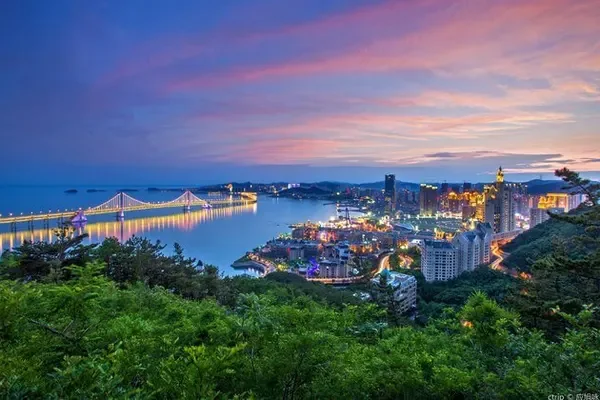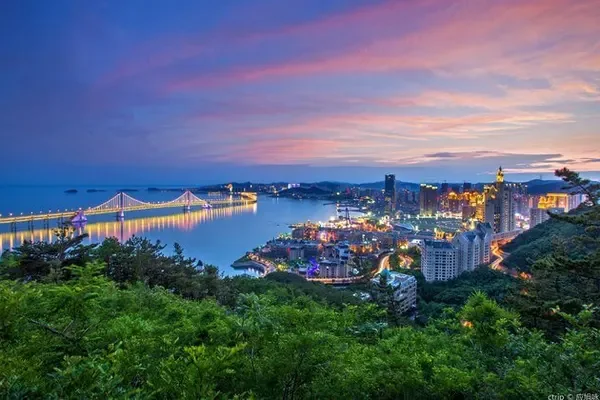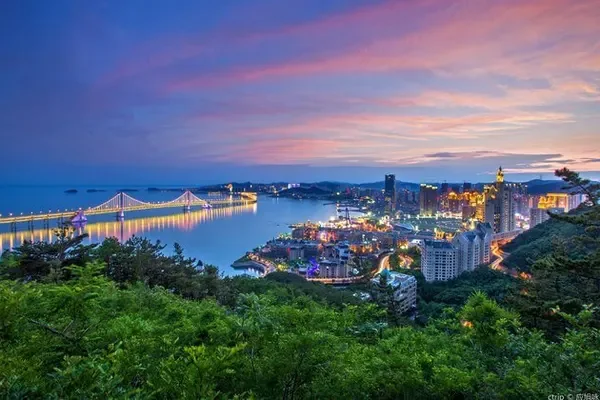As far as the topic is concerned, it is obviously inappropriate to write like this, especially when it comes to history, it is not a joke. However, although Empress Dowager Xiao and Cao Xueqin are hundreds of years apart, they are both inseparably linked to a place, and this place is Zhangjiawan, Tongzhou, located in the southeast of Beijing.

Sand table model of Zhangjiawan

Zhangjiawan Queen Mother Xiao Bridge (Tongyun Bridge)
Let me talk about the Empress Dowager Xiao first, I believe everyone will be familiar with it. A drama series "Yanyuntai" that has spread all over the country has given young people a little understanding of this "controversial" figure in history and that period of history. . The series positively shows the story of Empress Dowager Xiao pushing Daliao to the road of prosperity with the joint efforts of Han Derang, Ye Luxian and others by virtue of her willfulness, intelligence, daring personality, and foresight vision. But the older people regard the Empress Dowager Xiao in "The Romance of the Yang Family", but the "full family of loyal Yang family generals" regards the Empress Dowager Xiao as a deadly enemy, and was almost exterminated by the Empress Dowager Xiao! However, whether it is storytelling or romance, it deviates from the real history to some extent. But as far as the Empress Dowager Xiao River in Zhangjiawan is concerned, the Empress Dowager Xiao is indeed indispensable!

Empress Dowager Xiao Yunliang River
There are also different versions of legends about the origin of Empress Dowager Xiaohe's name. According to legend, when Empress Dowager Xiao led an army to conquer the Northern Song Dynasty, when she passed by the outskirts of today's Beijing, all the officers and men under her command were extremely thirsty. Empress Dowager Xiao reined in her horse and pointed her whip, and a clear and sweet river appeared in front of her, and all the soldiers cheered happily , Drinking to quench their thirst, later generations called this river Empress Xiao River. Another said that Empress Dowager Xiao once led an army stationed outside Nanjing for a long time, and the combat effectiveness of the army dropped sharply due to a lack of water. People finally found a clear but nameless river in desperation. Empress Dowager Xiao was delighted, so she decreed to name it after her...

Zhangjiawan Museum

Zhangjiawan Museum
In the Zhangjiawan Museum and the lecturers, it seems that some answers can be vaguely found. Although there is no trace in the official history, there are some records in the notes of the Ming and Qing Dynasties. From the notes, people know that the Empress Dowager Xiao River began in the sixth year of Tonghe (Liaonian), which was during the regency of Empress Dowager Xiao. As the first man-made canal project, she will definitely do it herself. After the successful excavation of the canal, it should be a matter of course to name it Empress Dowager Xiao River. In fact, regardless of whether it was the Empress Xiao River excavated by Empress Xiao, at least it was used for water supply for the army and food transportation and supply for the capital at that time. The excavation of this artificial river still has positive significance.

Exhibition of Zhangjiawan Museum

Zhangjiawan Museum

Zhangjiawan Museum
With the development of waterway transportation, as an important node in the water transportation of the Grand Canal, the Zhangjiawan Water Transportation Wharf, known as the "Confluence of Four Waters", gradually became alive. In the town, there are row upon row of shops and merchants from all over the place, creating a prosperous scene. In this regard, the status of Zhangjiawan City is extraordinary, so there is a saying that "there is Zhangjiawan first, and then Tongzhou City". The grand scene of "Wan Zhou Pian Ji" is one of the "Eight Views of Tongzhou" at that time.

Stone Lions on the Empress Dowager Xiao Bridge (Tongyun Bridge)

Empress Xiao Bridge Deck (Tongyun Bridge)

Queen Mother Xiao Bridge (Tongyun Bridge)
Today's Zhangjiawan and Empress Dowager Xiao River look really lonely, but compared to Shichahai, which is also the end point of the water transport terminal on the Grand Canal, it has become a place for online celebrities today. Sentence! It may also be due to the protection of cultural relics. The Yuntong Bridge is basically displayed in its original appearance, but it can be seen from the deep ruts on the bridge surface that the locals call it Xiao Taihou Bridge (Yuntong Bridge). , and a little lonely and decadent and full of desolation.

Zhangjiawan Museum

Zhangjiawan Museum
Next, let’s talk about the more shocking and inseparable character Cao Xueqin with Zhangjiawan. This earth-shattering discovery was all because a tombstone was excavated here! The name engraved on this tombstone is none other than "Cao Gongjuzhan Tomb Renwu" and the original name of the cultural master Cao Xueqin is "Cao Zhan"!

Zhangjiawan Museum (Cao Xueqin Tombstone)
In the winter of 1968, there was a big battle for leveling the land. Zhangjiawan Village is in charge of the line north of Empress Dowager Xiao River and south of Huazhuang. The project has progressed to... the intersection of the four directions, that is, the area of Caojiafen. Li Jingzhu, a member of the village, found a blue tombstone one meter below the ground. This is not only the stone tablet engraved with "Cao Gong's taboo sticking to the tomb at Renwu" in the above picture, Li Jingzhu donated the tombstone in 1992. This discovery immediately caused a shock in the red academic and archaeological circles at that time.

Zhangjiawan Ancient City Wall
Although the authenticity of the stone inscriptions on Cao Xueqin's tomb is still fiercely debated in the red academic circles, the only one that can tell the story clearly is the dilapidated old city wall standing alone on the bank of the empress dowager Xiao's Yunliang River.

Zhangjiawan City Gate
It has to be said that Zhangjiawan is an ancient town that rose due to water transportation, but its humanistic history is far more than water transportation. Canal culture, ancient city culture and Cao Xueqin's "Dream of Red Mansions" culture are all inextricably linked.
I believe that with the successful application of the Grand Canal and the changes of the times, the construction of the Grand Canal Cultural Belt will never stop. The present and future of Zhangjiawan will definitely show the world a deeper cultural heritage. Zhangjiawan in the future will also become more and more beautiful!



